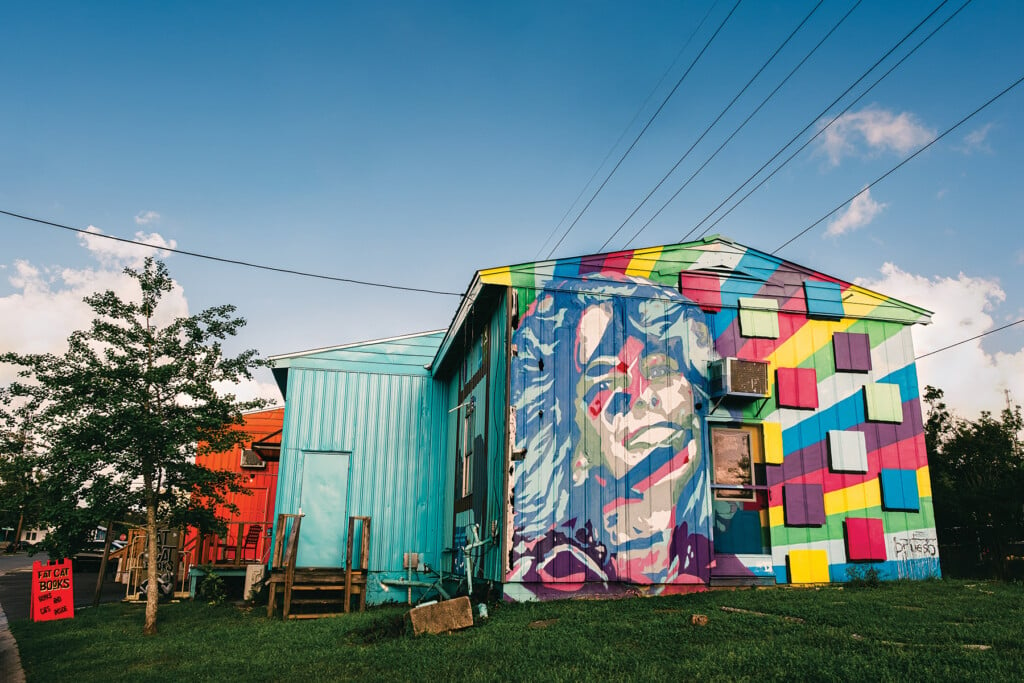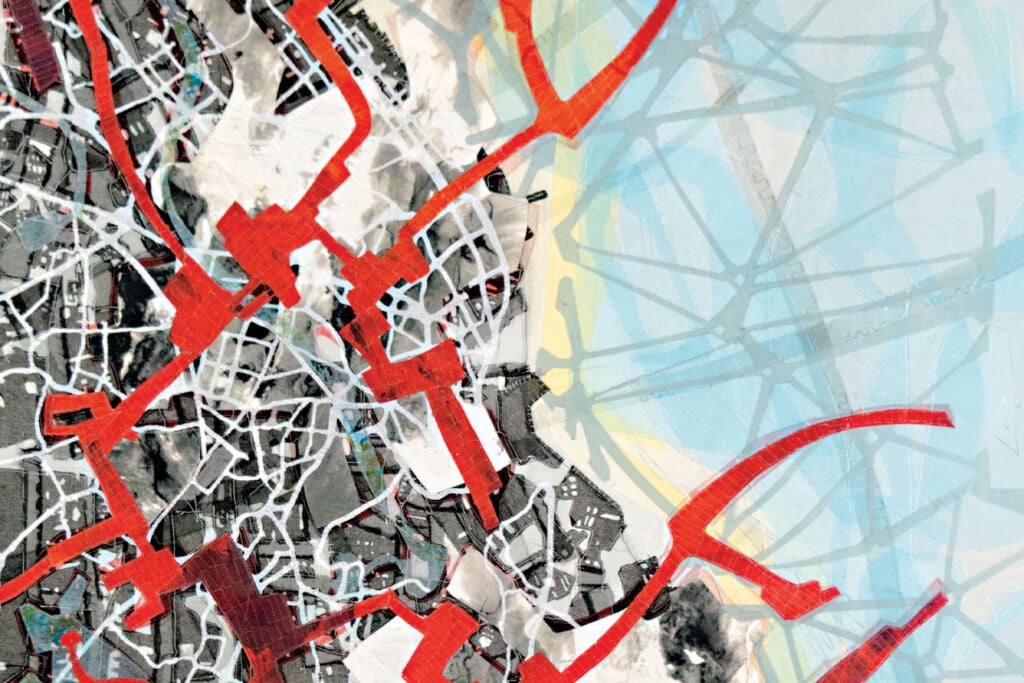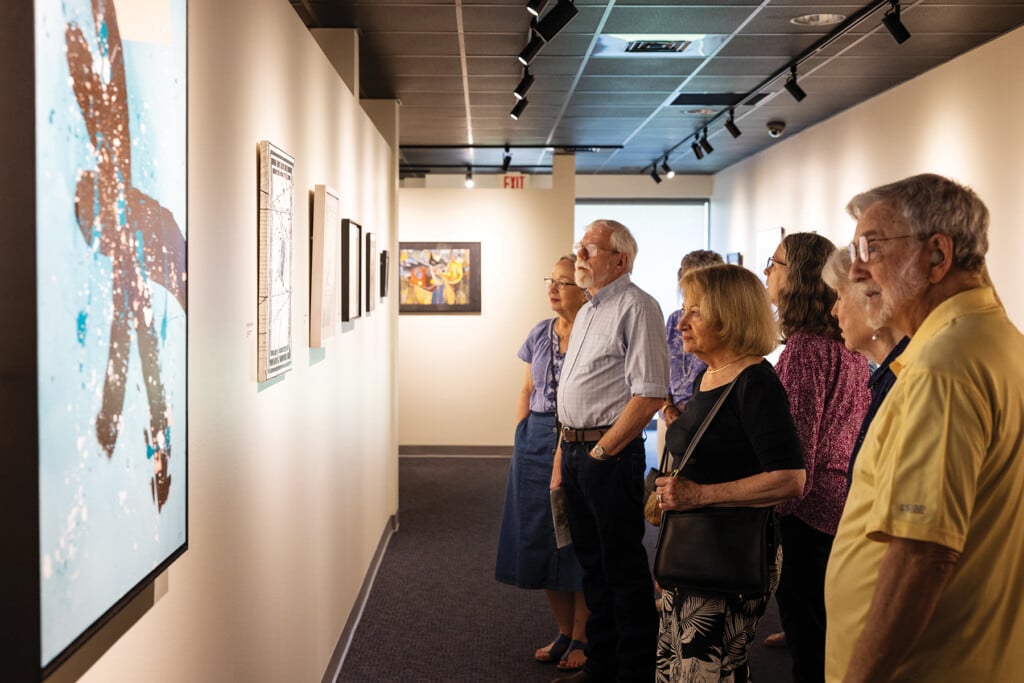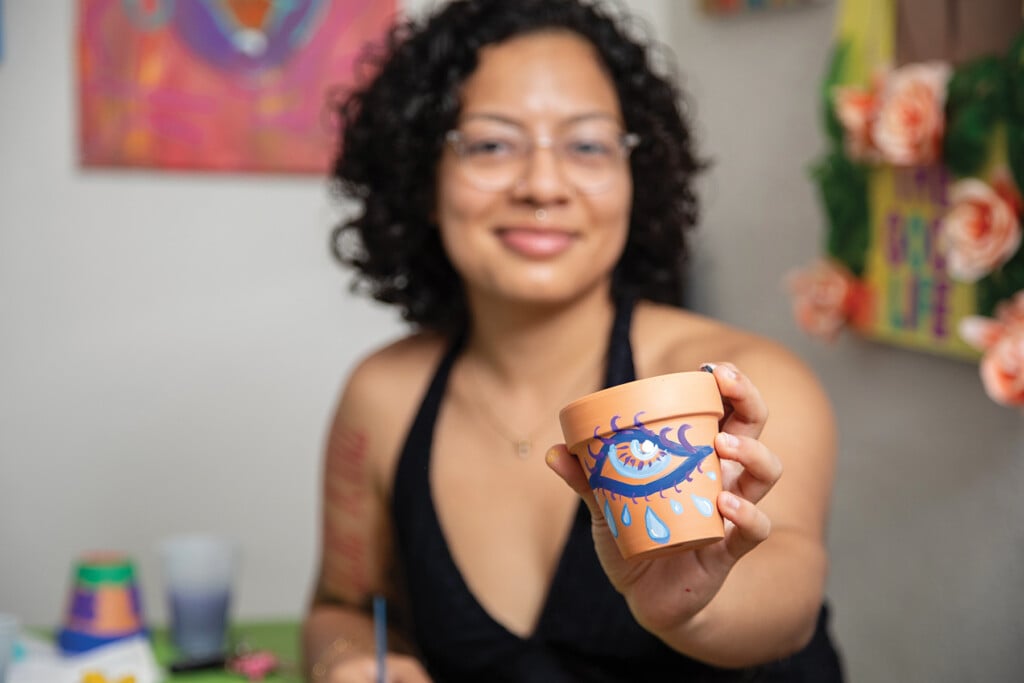Tallahassee’s Cultural Crossroads
The past, present, and unwritten future of Railroad Square

Railroad Square’s storied past is as layered as the murals that embellish its walls. Spanning nine acres, the district sits between Florida State University and Florida A&M University, with historic railroad tracks running along its edge. Originally the site of the McDonnell Lumber Company in 1941, the World War II–era industrial warehouses were repurposed in the 1960s as the Downtown Industrial Park, home to businesses like Westinghouse and local construction firms.
Nan Boynton’s takeover in the late 1970s sparked Railroad Square’s transformation into the cultural arts hub Tallahassee knows today. Though not an artist, Boynton was a passionate patron, offering affordable studio space that quickly attracted a diverse community. Filmmaker Victor Nunez, painters Trevor Bell and Ron Yrabedra, and sculptor Ed Love were among the first tenants, while Florida State University’s fine arts program utilized the space for students.
When artists moved in, the district soon pulsed with creativity. Visual artists repurposed warehouses into working studios. Metalworkers forged large-scale installations. Musicians and actors staged live shows. Writers and poets captivated crowds with readings. Jewelers, woodworkers, and textile artists filled shops with handcrafted goods. Street and graffiti artists infused the space with bold, colorful murals.
In 1980, Boynton launched May Fair, the district’s first cultural arts festival. The following year, she converted a former sawmill into 621 Gallery, now one of the largest contemporary art spaces in Northwest Florida. Businesses and restaurants followed, and by 2000, Railroad Square had become the anchor for First Friday, a monthly citywide arts celebration that grew into a defining tradition.
From Unexpected Owners to Media Spotlight
Boynton’s sudden passing in 2002 left her children, Lily and Adam Kaye, as the unexpected stewards of Railroad Square. At just 18 and 16 years old, they were thrust into leadership. With guidance from longtime staffers e’Layne Kelley, Ruth Wharton, and Ken Bernhard, they tightened operations and ushered in a new era.
Over time, Railroad Square expanded from an artist enclave to become a crossroads of creative commerce. At its peak, it housed 95 tenants, including galleries, vintage shops, fitness studios, and performance venues. First Friday grew into a cornerstone cultural festival, drawing thousands each month for live music, interactive art, and pop-up shops. National media outlets, including The Huffington Post, The New York Times Style Magazine, and Forbes, recognized it as a standout creative haven.
Terry Galloway, founder of the Mickee Faust Club—an arts/activist community theater that called Railroad Square home for 25 years—reflected on its impact. “It was a place of freedom, where creativity could flourish without restrictions … and it gave space for artists to be artists,” she says.
The Storm That Changed Everything
On May 10, 2024, disaster struck. A series of powerful tornadoes tore through Railroad Square, leaving devastation in their wake. Roofs were ripped away, buildings flooded, and power lines crumpled under the storm’s force.
“The destruction was surreal, like something from a movie set,” recalls Lily Boynton Kaye. “Managing the disaster site, keeping the public safe, and getting businesses back up and running was the greatest professional challenge we’ve ever faced.”
Amid the chaos, the community came together. Volunteers salvaged what they could, while local contractors worked tirelessly to restore damaged buildings. While some tenants, like the Mickee Faust Club, were forced to close due to the damage, many businesses managed to reopen within months—a testament to Railroad Square’s resilience.
A Community’s Battle to Preserve its Identity
Though 75 shops, eateries, and galleries are open, Railroad Square’s future remains uncertain. The Kayes have placed a portion of the property for sale, sparking debate about its direction.
“There is a strong public sentiment about not wanting to see Railroad Square change,” Kaye says. “We understand this and would likely feel the same if we were not responsible for managing it. However, the reality is that Railroad Square has always been evolving.”
A creative force forged from this uncertainty is the Railroad Square Revitalization Cohort, a coalition of local arts leaders from the Council on Culture & Arts (COCA), 621 Gallery, the Mickee Faust Club, and other organizations working to keep the arts at the center of its future.
Galloway acknowledges that writing the next act for Railroad Square won’t be simple. “Keeping the heart and soul of this place alive requires vision and commitment.”`
Kathleen Spehar, executive director of COCA, emphasizes the importance of maintaining Railroad Square’s artistic roots. “We’re grateful to the CRA and the City for their support, but now the focus is on securing a partnership to purchase the property,” she says. “The goal of the cohort is to ensure it remains an art park where creativity can thrive.”
Spehar envisions a future that honors Railroad Square’s past while fortifying it for future generations. “Railroad Square must remain a hub for artists and cultural organizations while also serving as an economic and tourism engine for the city.”
Tallahassee has successfully rallied to reinvent spaces before. The Blueprint Intergovernmental Agency’s investments in Cascades Park, FAMU Way, and Railroad Square itself demonstrate a commitment to urban placemaking. Now, local advocates are pushing for “creative placekeeping”—ensuring that existing artistic spaces are preserved, restored, and enhanced.
A Call to Action: What’s Next for Railroad Square?
Today, Railroad Square remains a vibrant weekend hot spot, but its long-term fate remains unwritten. Developers express interest, artists push for preservation, and the community watches, wondering if Tallahassee will rally to sustain this cultural landmark.
Brooklyn Croy, owner of The Other Side Vintage, has a deep history with Railroad Square. She celebrates 25 years in the business of “repurposing” and remains committed to preserving the district’s artistic legacy.
“I just hope something creative happens here—not just another student housing project or hotel,” Croy says. “I guess I like the idea of not throwing anything away and giving things new life.”
The future of Railroad Square rests with Tallahassee. Will the City preserve its artist-driven spirit, or will commerce outweigh creativity?
The next chapter is unwritten. Will you be part of the story?




